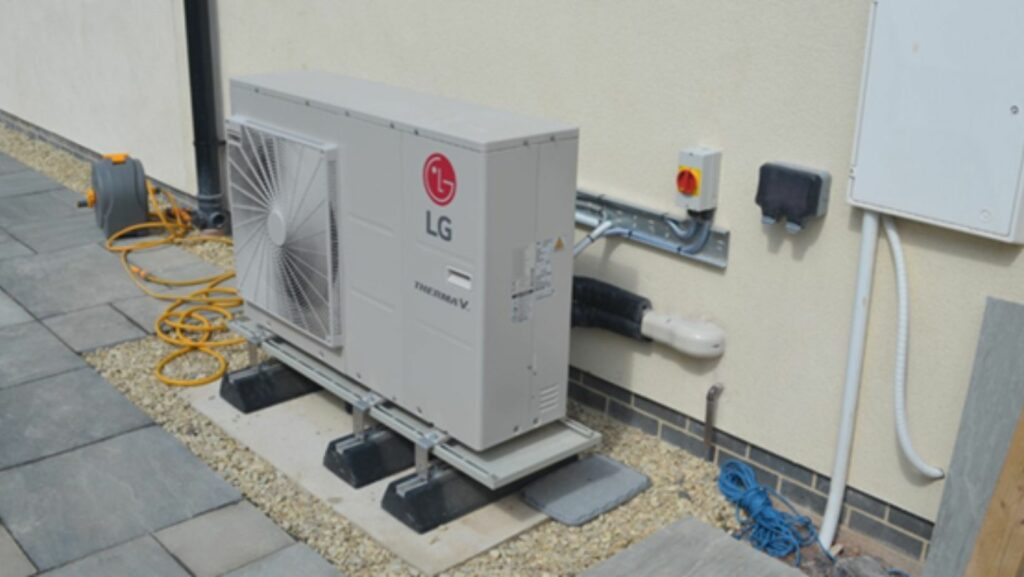Heating, Ventilation, and Air Conditioning (HVAC) systems are a pivotal element in maintaining a comfortable and healthy indoor environment for residential, commercial, and industrial buildings. These intricate systems do more than just heat or cool the space. They are responsible for improving the quality of the air we breathe, controlling the humidity levels, and essentially ensuring that occupants are comfortable regardless of the weather conditions outside.
An HVAC system is designed to meet a diverse range of climatic needs by using technology that maintains indoor temperatures and air quality through a seamless process of air delivery and temperature regulation. One of the critical aspects of these systems is their ability to filter out pollutants, allergens, and other particulates that can lead to poor air quality and various health issues.
With advancements in technology, modern HVAC systems have become more sophisticated, reliable, and energy-efficient than ever before. These systems can include smart thermostats that allow users to control the climate remotely, as well as incorporate zoning systems that can independently manage different areas or ‘zones’ within a building to provide tailored comfort and improved energy savings.
For those considering a new HVAC installation, it is essential to understand the myriad components and options available to make an informed decision that balances initial investment with long-term savings, comfort, and overall system performance. The following sections will delve into the key components, various system types, and considerations such as energy efficiency and preparing for installation—setting the stage for a decision that will impact everyday living for years to come.
Key Components of a New HVAC Installation
When considering the installation of a new HVAC (Heating, Ventilation, and Air Conditioning) system, it is essential to understand the key components that make up a complete setup. A comprehensive HVAC system not only regulates temperature but also maintains indoor air quality and provides ventilation. Here are the primary components that are typically included in a new HVAC installation:
1. Furnace: The furnace is the powerhouse of the HVAC system, providing central heating. It usually runs on gas, oil, electricity, or geothermal power, and its size will depend on the heating requirements of the space.
2. Air Conditioner: Working in tandem with the furnace, the air conditioner cools the indoor air by removing heat and humidity. It consists of an outdoor unit that houses the compressor and condenser and an indoor unit often integrated with the furnace’s air handler.
3. Ductwork: Ducts are the channels through which warm or cool air travels throughout the home. They are a critical aspect of the system, and proper design and installation are vital for efficiency.
4. Thermostat: This is the system’s control center, allowing users to set the desired temperature and control when the heating or cooling runs. Smart thermostats offer more advanced features, such as remote control and energy usage insights.
5. Vents and Registers: These are the exit and entry points for air to be distributed into or extracted from individual rooms, ensuring effective circulation.
6. Air Filters: Air filtration is a crucial part of maintaining indoor air quality. Filters trap dust, pollen, and other airborne particles, preventing them from recirculating.
7. Optional Add-ons: Some systems may further include humidifiers, dehumidifiers, or air purifiers to enhance comfort and air quality, plus zoning systems for tailored climate control across different areas of the building.

With these components in place, a new HVAC system can deliver the desired comfort and efficiency, making the investment one that improves the overall living or working environment.
Understanding HVAC System Types
When considering a new HVAC system, it’s important to understand the various system types available to find the best fit for your space and needs. Generally, HVAC systems fall into several categories, including split systems, packaged systems, ductless mini-splits, and heat pumps.
Split systems are the most common in residential settings, consisting of an outdoor unit housing the compressor and condenser, and an indoor unit containing the evaporator coil and air handler. This type is favored for its ability to maintain consistent indoor temperatures and for its compatibility with both heating and cooling.
Packaged systems offer a compact solution, where the compressor, condenser, and evaporator are all located in a single outdoor unit. These are particularly beneficial for homes or buildings with limited indoor space for components, and they can be easier and less costly to install.
Ductless mini-splits cater to the needs of spaces where ductwork is impractical or non-existent. Each room or zone has its own indoor unit, providing individualized climate control and reducing energy losses associated with ductwork. This type of system is increasing in popularity due to its flexibility and efficiency.
Heat pumps stand out as a system that can provide both heating and cooling. They transfer heat from the outside air into the home during winter and reverse the process to cool the home in summer. Their high efficiency can lead to lower energy bills, making them an attractive option in climates with moderate heating and cooling needs.
Understanding the distinctions between these HVAC system types is crucial to making an informed decision that aligns with your comfort requirements, the layout of your property, and energy efficiency goals.
Assessing Your Heating and Cooling Needs
Before choosing a new HVAC system, it’s crucial to assess your individual heating and cooling needs to ensure you select the right size and type of equipment for your space. Factors such as the size of your home, local climate, insulation levels, the number of windows, and even the direction your home faces can all influence the demands of an HVAC system.
The size of the HVAC system is paramount; a unit that’s too small won’t adequately heat or cool your home, while one that’s too large will cycle on and off too frequently, leading to inefficient energy use and increased wear on the system. This process, known as sizing, often involves a professional performing a Manual J calculation, which is a detailed analysis that considers the various aspects of your environment and living space.
Additionally, any existing issues with uneven temperatures across rooms should be addressed. This may involve considering zoning solutions or improving ductwork for balanced airflow. Identifying and rectifying these issues beforehand will allow the new HVAC system to operate at peak efficiency and provide consistent comfort throughout your home.
It’s also worth considering any future changes, such as planned home additions or renovations, that could alter your heating and cooling needs. By taking a comprehensive view of both current and projected requirements, you can invest in an HVAC system that will be adequate both now and in the years to come.
Energy Efficiency and Your New HVAC System
When considering a new HVAC system, energy efficiency should be at the forefront of your decision-making process. The efficiency of an HVAC system is measured by its Seasonal Energy Efficiency Ratio (SEER) for cooling and its Annual Fuel Utilization Efficiency (AFUE) for heating. A higher SEER or AFUE rating signifies a more efficient unit that consumes less energy, leading to lower utility bills and a reduced environmental impact.
Modern HVAC units are designed with technological advancements that offer significant improvements in energy efficiency compared to older systems. Features such as variable speed motors, smart thermostats, and zoning capabilities allow for precise control of indoor temperatures, minimizing energy waste. Moreover, many governments incentivize the purchase of high-efficiency systems through tax credits and rebates, offsetting some of the initial investment costs.
When selecting your new HVAC system, consider units that are ENERGY STAR certified. These have been tested and verified to meet or exceed the stringent energy efficiency guidelines set by the Environmental Protection Agency. Besides the direct economic benefits, choosing an energy-efficient HVAC system supports sustainability efforts, contributing towards national goals of reducing energy consumption and greenhouse gas emissions.

To maximize the efficiency of your new HVAC system, proper sizing and professional installation are crucial. An oversized or undersized unit will not only run inefficiently but may also lead to increased wear and tear. By pairing the right size system with the latest energy-saving features, you can ensure that your investment provides comfortable living conditions while also being kind to your wallet and the planet.
Preparing for HVAC Installation: What to Expect
When you are gearing up for a new HVAC installation, there’s a set of steps you can take to ensure the process goes smoothly. Here’s what to expect and how to prepare:
**Scheduling and Assessment**: Firstly, arrange a visit from your HVAC contractor. They will carry out an initial assessment of your property to determine the best system type, size, and configuration based on your space and requirements.
**Pre-Installation Requirements**: Your contractor may advise you to clear the work area, ensuring that there’s enough space for the technicians to move freely. If you’re replacing an old system, ensure the old equipment is accessible for removal.
**Installation Day**: The installation of a new HVAC unit could take anywhere from a few hours to a few days, depending on the complexity of the system and the work required. Technicians will install the indoor and outdoor units, the ductwork if needed, and any additional components such as thermostats and ventilation equipment.
**Testing and Tutorial**: Once the installation is complete, the technicians will test the new system to ensure everything is functioning correctly. They should also take time to walk you through the operation of your system, showing you how to change filters, operate the thermostat, and perform basic maintenance.
**Follow-up**: After installation, a good contractor will offer a follow-up service to address any questions or issues. This might include a post-installation inspection or a service plan for regular maintenance.
By understanding what to expect and preparing accordingly, you can help your HVAC installation go off without a hitch, paving the way for years of comfortable, efficient heating and cooling.

